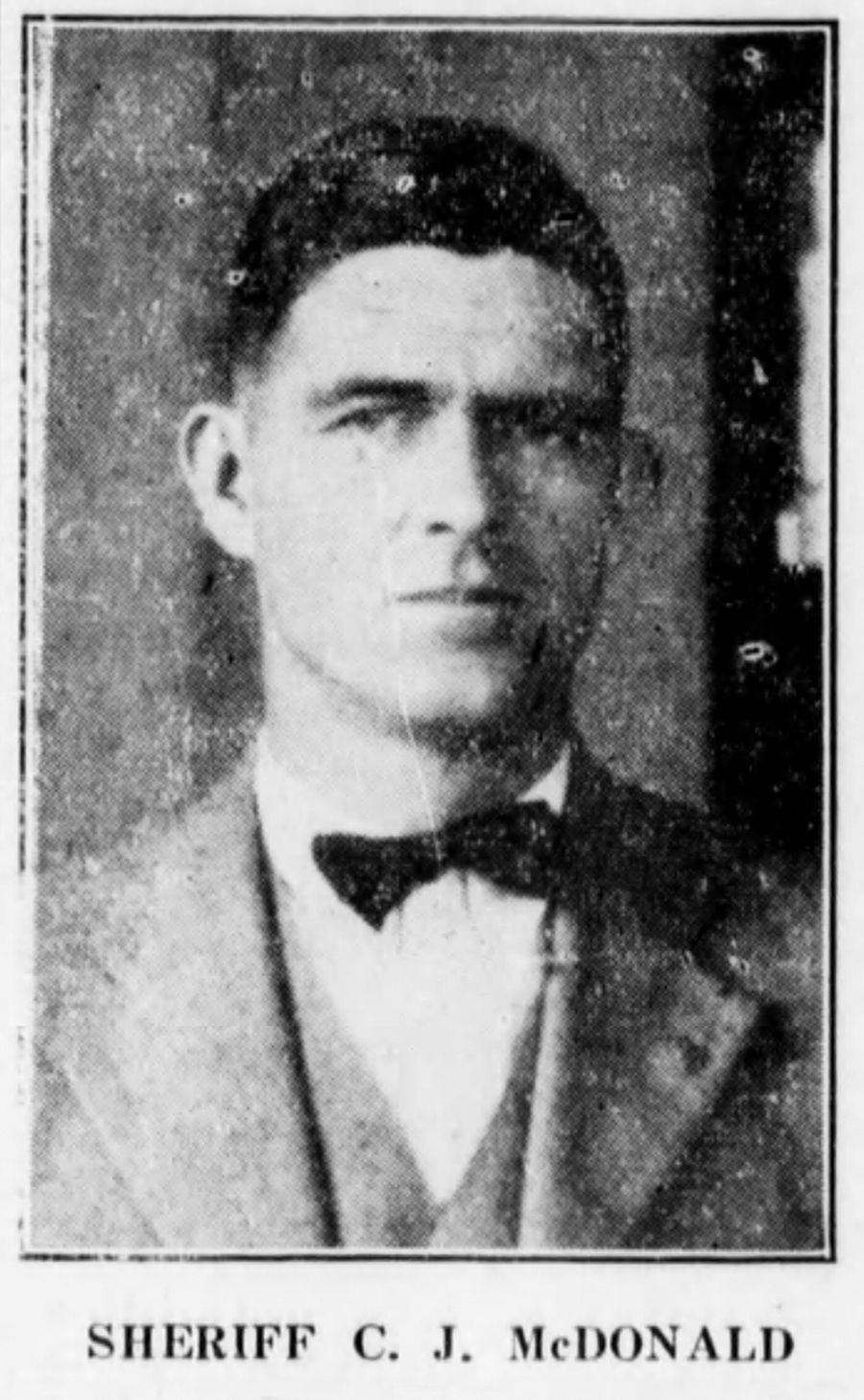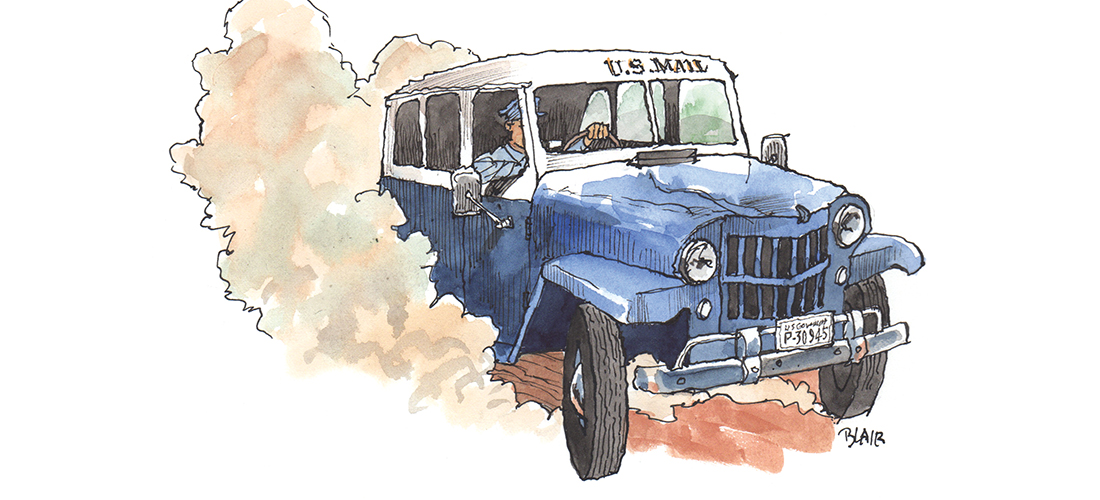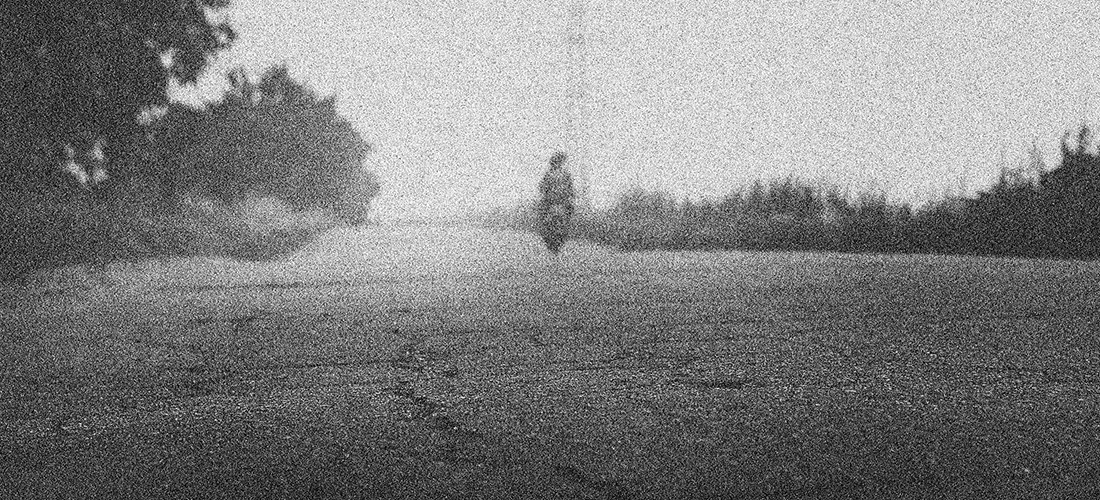The 1937 hunt for Juney Carraway’s killers
By Bill Case
It was not uncommon for 48-year-old tourist camp operator Juney Carraway to vanish for days without informing wife Leoma, or anyone else, of his whereabouts. On one occasion the wandering Juney had flown the coop for months before reappearing. Thus, it did not particularly alarm Leoma when her husband and two male lodgers did not make it back to Connecticut Camp by nightfall on Friday, Aug. 6, 1937. The men had left the camp at 6:30 that morning in Carraway’s Chevrolet coupe.
Carraway typically carried hundreds of dollars in his bulging billfold — a habit he did not hide. As Sunday dawned and there was still no trace of her husband, Leoma became fearful Juney had become a tempting target for desperate men harboring bad intentions.
The men who left Connecticut Camp with Carraway definitely checked the desperation box. Unkempt, with straggly hair and dirty overalls, they had hitchhiked into the camp the previous Wednesday, arriving from parts unknown. An odd couple, the older of the two was in his late 20s, short, stocky, dark-haired and of swarthy complexion. He spoke with a distinct accent. The younger man, around 20, was a lanky blond string bean.
Connecticut Camp, located on U.S. 1 between the rural hamlets of Pinebluff and Hoffman, was rather lax when it came to the niceties of registration. Though the drifters seemed friendly enough to Leoma, she didn’t even know their names.
Friday wasn’t the first time Carraway had given his two guests a lift. The day before he’d taken them in search of local employment — just the sort of thing that better-off folks did for the downtrodden during the hard times of the Great Depression.
By Sunday afternoon, a frantic Leoma called the Moore County Sheriff’s Office and reported her husband missing. The department promptly posted an all points bulletin urging area law enforcement personnel to be on the lookout for Carraway, his Chevy coupe, and the two drifters.
Like most August days in the Sandhills, temperatures on Sunday, Aug. 8, flared into the 90s. Swan Pond, a local swimming hole that exists to this day, is located approximately a quarter-mile north of Midland Road, and a mile west of downtown Southern Pines. A handful of boys seeking relief from the sweltering heat in its cool water noticed a Chevy coupe parked on the pond’s north shore, far from any road or driveway. At first, the swimmers paid no attention to it, but when the car still had not moved in succeeding days, one of the lads mentioned it to his father, who notified law enforcement.
Sheriff’s deputy Charles Dunlap made his way to the abandoned vehicle during the late afternoon of Tuesday, Aug. 10. His search of the auto found Carraway’s personal papers scattered on the car’s floor. Other evidence suggested something more sinister had taken place. There was a bullet hole in the left side window, another in the car’s hood, and a spent .22 caliber bullet rested on the frame of the motor. The whereabouts of Carraway and his two passengers remained unknown.
Dunlap asked Aberdeen mechanic Jim Riley to tow Carraway’s auto from the pond to his garage’s storage lot. On the morning of Wednesday, Aug. 11, Riley carefully maneuvered his tow truck through the dense pines to the abandoned Chevy. When he noticed the car’s right front tire and rim were missing, he went looking for them. He found the tire just off the edge of Midland Road. Venturing deeper into the woods, he saw the rim. Near the rim he saw Juney Carraway’s badly decomposed body with a 5-inch bone-handled knife and a sandbag alongside the dead man.
County coroner Carl Fry hurried to the scene. After examining the body, he concluded that Carraway had been beaten about his head and body, dragged through the woods and knifed through the heart. Fry found no evidence that gunplay had played a role in the attack. The coroner estimated the murder had occurred on Aug. 6, the day Carraway departed his Connecticut Camp for the final time.
Tire marks on Midland Road indicated that Carraway had been driving west toward Pinehurst when he lost control of the car. It veered over the median across the eastbound portion of Midland, careening through shrubbery on the double road’s south side. Still in motion, the Chevy swerved back across the median and the westbound roadway before sideswiping a tree, dislodging the tire from the rim.
One of Carraway’s passengers, it was suspected, had struck him over the head with the sand bag, causing the car to swerve wildly. When the car stopped, it appeared as though the dazed Carraway managed to open the driver-side door and tumble out in an effort to ward off, or flee from, his attackers. Whether they struck him again or not, Carraway must have lost consciousness because the two assailants were able to drag him away from the road into the woods, where he was stabbed to death. The killers managed to move the Chevy through the trees to the edge of Swan Pond. Then they disappeared.
Given a five-day head start, Moore County Sheriff C.J. McDonald knew it would be no easy task to track the killers. The 45-year-old McDonald was a seasoned lawman. A former state highway supervisor, he had been elected sheriff in 1928 and earned a reputation as an indefatigable detective. The Pilot wrote, “Once he (McDonald) catches the scent of an evildoer, he follows it relentlessly no matter where it leads. No detail is too minor, no distance too far when the quarry is at the end of the line.”
And the sheriff was no stranger to sensational cases. In 1929, he had brought to justice Granville Deitz, the runaway killer of Southern Pines’ police chief, Joseph Kelly. But the finding of Juney Carraway’s murderers would take all the resolve McDonald could summon.
After receiving Fry’s inquest findings, McDonald launched what would eventually morph into an international manhunt. With the help of his most trusted deputies, A.W. Lambert, Herman Grimm and Dunlap, by late Wednesday afternoon (Aug. 11), the officers had inspected the murder scene, interviewed witnesses at Connecticut Camp, and transported evidentiary items to Raleigh for forensic analysis and fingerprinting. Because it had rained in the intervening time between the murder and the discovery of Carraway’s body, fingerprints on the knife and other key articles had been washed away.
News of the murder spread rapidly through the Sandhills. When Pinehurst taxicab driver Joe Hensley learned details of the crime on Thursday, Aug. 12, he contacted the sheriff. He said two men matching the suspects’ descriptions had shown up at his Pinehurst taxi stand around 10 a.m. on Friday, Aug. 6. They inquired whether Hensley could drive them to Raleigh in time to arrive there by noon. The men explained they were picking up two motorcycles that had been shipped to the city, and “they wanted to get there as quickly as possible to pick them up.” The two claimed they were starting new jobs and the cycles were going to serve as their transportation.
Hensley’s fares rarely ventured outside Moore County, so the long-haul request sparked his curiosity. He asked the men why they didn’t take the train. “We don’t like to ride on trains,” was the response. Hensley quoted a $15 fare for the trip. Eyeing the shabby appearance of the duo, the cabbie insisted on payment up front.
On the way to Raleigh, Hensley stopped for food at a filling station in Cameron. When the passengers got out of the cab to stretch their legs, Joe saw the outline of a gun in the hip pocket of one of them.
With alarm bells clanging in his mind, Hensley paid close attention to what the two men said and did. The older, darker complexioned man (Hensley suggested perhaps he was of Italian heritage) talked constantly and with a distinct accent. Joe observed the man was missing part of a forefinger. The younger 6-foot sidekick, with long blond hair combed straight back, said he hailed from Boston. Hensley noticed the tall man’s oversized footwear and wondered whether they were “convict shoes.” Both were defensive about their rough appearance, assuring Hensley they would get cleaned up as soon as they arrived in Raleigh. The lanky blond made mention of having spent time “in Reading.” This aside would become a key — though initially misunderstood — clue. Hensley dropped the men off in Raleigh (not at a motorcycle dealership), and thought nothing further of the matter until learning of Carraway’s murder.
Sheriff McDonald instructed his deputies to contact every motorcycle shop in Raleigh and neighboring counties. A Greensboro dealer reported that a young man answering the lanky blond’s description had entered his shop and bought a motorcycle on Aug. 9. The buyer was tracked down and apprehended on the 15th. After learning that the suspect’s brother-in-law in Albany, New York, matched the description of the darker, fast-talking suspect, it momentarily appeared that the case might be wrapped up. That possibility disappeared when the men provided ironclad alibis. Both had been in Albany on Aug. 6.
By the end of August, the investigation had stalled. McDonald sat for an interview with a reporter from The Pilot on Sept. 1 and was unable to offer much comforting information. He acknowledged that Boston’s police department, contacted thanks to Hensley’s information, had yet to report anything useful. Several other leads had proved to be dead ends. One was a rumor that a woman staying at Connecticut Camp had befriended the suspects. In fact, she’d never laid eyes on them. Another resulted in the arrest of an Italian man in Durham who, after questioning, was quickly released. A promising lead involving two Norfolk, Virginia, suspects also fizzled. Despite McDonald’s distribution of 500 wanted posters to police departments across the eastern United States, the identity and whereabouts of the suspects remained unknown.
In search of a new angle, the sheriff brainstormed with his deputies. They had all assumed the suspects entered the Sandhills on the day they arrived at Connecticut Camp. What if the men had been locked-up in the county jail, an ever-present occupational hazard for train-hopping hoboes? McDonald summoned the jailer to his office. He remembered two New York City guys, friends with one another, matching the suspects’ descriptions. Convicted of hoboing, James DeGruiccio, age 25, and Albert Whitworth, age 22, had served 60-day sentences in the Moore County jail prior to being released from custody on July 4th, a month prior to the Carraway murder.
If the men had indeed killed Carraway, it seemed logical to McDonald they would hightail it back to their hometown. On Sept. 17, he journeyed to New York City to confer with officers in the NYPD’s homicide unit. In the meeting, the police captain in charge agreed to assign undercover plainclothesmen to find DeGruiccio and Whitworth.
After returning to Carthage on Sept. 19, the sheriff complimented the NYPD. “They have a real police force,” he effused, “and if the men can be found I think they will find them.” Reflecting McDonald’s optimism, the Sept. 24 edition of The Pilot carried the headline “Sheriff Confident of Arrests in Murder Case.”
McDonald’s faith in New York City’s finest proved justified. DeGruiccio and Whitworth were identified and arrested. The Oct. 1 edition of The Pilot hailed the news: “Hats off to police authorities of Moore County and New York City in the apprehension of the probable murderers of J.E. Carraway.”
There was one last formality to address before the sheriff could declare the case solved: a positive identification by Joe Hensley that the men in custody were the same men he had transported to Raleigh. Hensley agreed to go to New York with deputies Lambert and Grimm to make the identification.
A lineup including the two suspects was arranged. Hensley did, indeed, pick DeGruiccio and Whitworth out of the grouping, but then the cabdriver added: “They look enough like the men I carried to be their twin brothers, but I’m positive they are not the same men.” When the two suspects later furnished evidence confirming their presence in New York on Aug. 6, they were released. Another dead end.
The news from New York was a bitter pill for McDonald. Remembering that the lanky blond suspect had mentioned “Reading” in the course of the cab ride to Raleigh, McDonald suggested that Lambert and Grimm stop in Reading, Pennsylvania, on their way home. Perhaps that city’s police department could provide a lead. The detour proved just as fruitless, and the deputies returned to Carthage disappointed and empty-handed.
The sheriff was back to square one. McDonald determined there was one more ground ball to run out before suspending his investigation. He wanted to conduct a final, exhaustive inspection of Connecticut Camp, even though two months had passed since the murder, and a search of the premises seemed an exercise in futility. The deputies reexamined every inch, focusing at last on a massive trash heap located behind the camp’s cabins. After hours rummaging through the foul refuse, one of the officers came across a small scrap of paper bearing a smudged and barely legible name and address that read:
Bill Sommers
249 Forest St.
Reading, Mass.
It wasn’t Pennsylvania at all, but Massachusetts, and Reading happened to be a suburb of Boston — the city where the lanky blond told Hensley he once lived. Deputy Grimm was dispatched to Reading, Massachusetts, where he found and interviewed Bill Sommers, who operated a motorcycle store there. Sommers recalled that two men matching the descriptions of the killers had visited his shop and discussed acquiring motorcycles for a trip south, but had left the store without making a purchase.
Grimm passed the new information on to Reading’s police department. An officer there thought the tall blond who had visited Sommer’s shop might be 19-year-old Robert Svendsen, who he believed resided in the neighboring town of Somerville with his mother, Lily Svendsen. The Reading police visited Lily, who said her son had recently moved to Hamilton, Ontario, where his father lived.
With Svendsen in Canada, Grimm confronted matters involving international law and extradition. It would require complicated paperwork to arrest Svendsen for a crime committed in the United States and, afraid the young man might flee, Grimm convinced Hamilton police to arrest him for vagrancy and hold him on that charge until the deputy was able to obtain authority for an arrest for the U.S. murder.
During the second week of January 1938, Grimm left Boston, crossed the border into Canada, and headed for Hamilton to interrogate Svendsen. The young man admitted involvement in the crime, and seemed relieved to do so, but maintained it was his confederate, “Griffith,” a Canadian of French and Native American descent (not Italian), who had smashed Carraway over the head and knifed him.
Svendsen said he had been totally stunned by the unexpected violence. He claimed to have had no inkling that Griffith intended to either hurt or rob Carraway. The killing made no sense to him, especially, he said, since Carraway had been doing the two a favor by giving them a lift to Pinehurst. Svendsen confessed he helped cover up the crime by dragging Carraway into the woods, but only did so because Griffith pointed his pistol at him. Svendsen did not turn down the $75 Griffith gave him, a small portion of the loot removed from Carraway’s billfold.
Svendsen said he and Griffith separated after the cab ride to Raleigh and, with his share of the money, bought new clothes, shoes and a motorcycle, then headed north. In Baltimore, the gangling youth collided with a streetcar and sustained a knee injury that laid him up in the hospital for several weeks. Following his recovery, he continued on to Somerville to visit his mother before heading for Canada, where he had been scheduled to start a new job in Hamilton on, as it turned out, the day after his arrest.
The young man also provided details regarding his association with Griffith. They had known each other for only a week before journeying together to Springfield, Massachusetts, where they spent a night at the house of Griffith’s family. Afterward, the two made their way south by various means: in an old jalopy (which they sold in Baltimore), riding a train and hitchhiking.

Svendsen waived extradition and Grimm transported him to Carthage to await trial. When Springfield police were unable to locate Griffith’s family residence — let alone Griffith himself — Svendsen was asked whether he would be able to find the house where they’d spent the night. He thought he could. In fact, he was eager to assist the police, since Griffith had brought him nothing but trouble. With Svendsen in tow, Grimm and Dunlap made yet another trip to New England.
It took an entire day of meandering through the streets of Springfield, but Svendsen finally pointed out the house. Griffith’s family no longer resided there, however, having moved to Canada. In checking with neighbors, the officers discovered that the family’s name wasn’t, in fact, Griffith at all — it was Caron. The neighbors were familiar with Svendsen’s swarthy accomplice. His real name was Jean Baptiste Caron, an erstwhile circus roustabout and tailor. Svendsen was flabbergasted that Caron had used an alias but there was a plausible reason for the deception — Jean Baptiste Caron had a lengthy criminal record.
Now that the police knew Caron’s actual identity, he became easier to track. Soon, an array of Canadian law enforcement entities, including the Northwest Mounted Police, were nipping at his heels. Caron presumably sensed law enforcement was catching up to him because he hopped a freight train in Halifax, Nova Scotia, and rode it 750 miles before getting off in Waterloo, Quebec. Word of Caron’s crime traveled faster than the train did, however, and provincial police were waiting to apprehend him.
After receiving a telegram from Montreal advising of Caron’s capture, McDonald and Grimm made ready for a trip to Canada to escort the prisoner, who had waived extradition, back to Moore County. They reached Montreal on Saturday, Feb. 26, and returned with a handcuffed Caron to Carthage, a little more than six months after Carraway’s murder.
Charged with first-degree murder, there was a distinct possibility Caron could receive the death penalty. His involvement in the brutal crime could not be seriously disputed, and his cohort had identified him as the actual killer. Caron could try avoiding the gas chamber by pointing the finger at Svendsen, but sweet-talking a jury into believing that the 19-year-old had masterminded the plot would have been a tall order for Clarence Darrow, let alone the local lawyer defending Caron. Besides, Svendsen simply did not look the part. The Moore County News described the gangly youth as having “anything but a killer’s face.”
Nonetheless, Caron accused Svendsen of having done the knifing that finished Carraway. But other statements he offered tended to tighten the noose around his own neck. By claiming that Svendsen was in on the plan to kill Carraway, Caron essentially acknowledged his own conspiratorial role. He said that the younger man had prepared the sandbag for the attack, but then admitted being the one who struck Carraway with it. During the period leading up to the trial, it became obvious that Caron had little confidence he could avoid a death sentence. The Pilot reported he was busy negotiating the sale of his body for medical research.
The trial began the last week of May. Caron did not take the stand, but Svendsen did. While the jury members acknowledged that the defendants had committed a dastardly homicide, they were unable to agree on the specific charges upon which to convict them. Accordingly, the judge declared a mistrial. The breakdown of the jury’s split votes indicated that Caron had narrowly escaped a first-degree murder conviction that would have exposed him to the death penalty. Several jurors viewed Svendsen’s role more leniently. Two had been willing to let him off with a charge of manslaughter.
The defendants were tried again in August. This time Judge E.C. Bivens empanelled a special “blue ribbon” jury to hear the case. The presentation of evidence mirrored the first trial and on Aug. 18 the jurors returned a verdict of second-degree murder for both men. Surely, Caron breathed a sigh of relief; Svendsen not so much. Judge Bivens issued the maximum sentence available to both men: 30 years imprisonment at hard labor.
Sheriff McDonald and his deputies received high praise for their perseverance and ingenuity in bringing Carraway’s killers to justice. Without benefit of closed-circuit cameras, social media tip-offs, DNA or 21st century forensics, they had painstakingly solved an intractable murder case. The investigation had weathered a multitude of disheartening false leads before the long-shot trash bin search produced a paper scrap that cracked the case. Daring Detective magazine carried a feature story detailing it all in its February 1939 issue.
Charlie McDonald’s illustrious career as Moore County sheriff would continue for another 20 years. Deputy Lambert served under the sheriff for that entire tenure. Herman Grimm did not stay long, moving on to a position with the state ABC. Ironically, Grimm would later run for sheriff against his old boss. Like all Charlie’s challengers for the office, Herman lost. When McDonald finally removed his shield in 1958, his 30-year tenure matched the longest of any sheriff in North Carolina’s history. Two months after retiring, he died.
Juney E. Carraway’s body lies in Northam Cemetery, a pastoral graveyard on the outer reaches of Richmond County, his good deed on a hot August day tragically punished. PS
Pinehurst resident Bill Case is PineStraw’s history man. He can be reached at Bill.Case@thompsonhine.com.
















